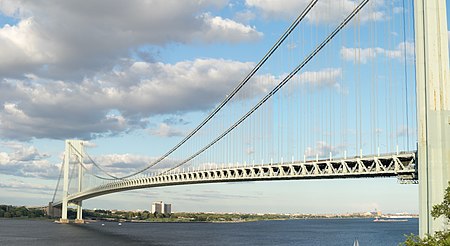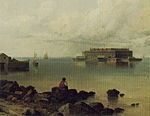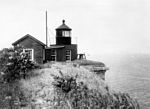Verrazzano-Narrows Bridge

The Verrazzano-Narrows Bridge ( vər-ə-ZAH-noh; also referred to as the Verrazzano Bridge, locally as the Verrazzano, and formerly as the Verrazano-Narrows Bridge or Narrows Bridge) is a suspension bridge connecting the New York City boroughs of Staten Island and Brooklyn. It spans the Narrows, a body of water linking the relatively enclosed New York Harbor with Lower New York Bay and the Atlantic Ocean. It is the only fixed crossing of the Narrows. The double-deck bridge carries 13 lanes of Interstate 278: seven on the upper level and six on the lower level. The span is named for Giovanni da Verrazzano, who in 1524 was the first European explorer to enter New York Harbor and the Hudson River. Engineer David B. Steinman proposed a bridge across the Narrows in the late 1920s, but plans were deferred over the next twenty years. A 1920s attempt to build a Staten Island Tunnel was aborted, as was a 1930s plan for vehicular tubes underneath the Narrows. Discussion of a tunnel resurfaced in the mid-1930s and early 1940s, but the plans were again denied. In the late 1940s, urban planner Robert Moses championed a bridge across the Narrows as a way to connect Staten Island with the rest of the city. Various problems delayed the start of construction until 1959. Designed by Othmar Ammann, Leopold Just, and other engineers at Ammann & Whitney, the bridge opened on November 21, 1964, and a lower deck in 1969 to alleviate high levels of traffic. The New York City government began a $1.5 billion reconstruction of the bridge's two decks in 2014. The Verrazzano-Narrows Bridge has a central span of 4,260 feet (1.30 km; 0.81 mi). It was the longest suspension bridge in the world until it was surpassed by the Humber Bridge in the United Kingdom in 1981. The bridge has the 18th-longest main span in the world, as well as the longest in the Americas. When the bridge was officially named in 1960, it was misspelled "Verrazano-Narrows Bridge" due to an error in the construction contract; the name was officially corrected in 2018. The Verrazzano-Narrows Bridge collects tolls in both directions, although only westbound drivers paid a toll from 1986 to 2020 in an attempt to reduce traffic congestion.
Excerpt from the Wikipedia article Verrazzano-Narrows Bridge (License: CC BY-SA 3.0, Authors, Images).Verrazzano-Narrows Bridge
Staten Island Expressway, New York Staten Island
Geographical coordinates (GPS) Address External links Nearby Places Show on map
Geographical coordinates (GPS)
| Latitude | Longitude |
|---|---|
| N 40.606388888889 ° | E -74.045555555556 ° |
Address
Verrazzano-Narrows Bridge
Staten Island Expressway
10305 New York, Staten Island
New York, United States
Open on Google Maps









